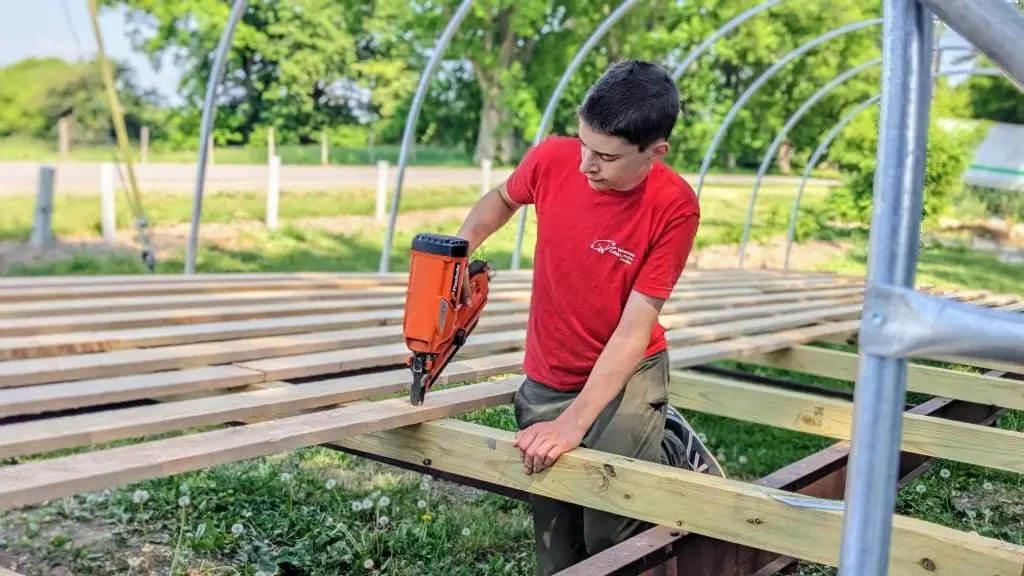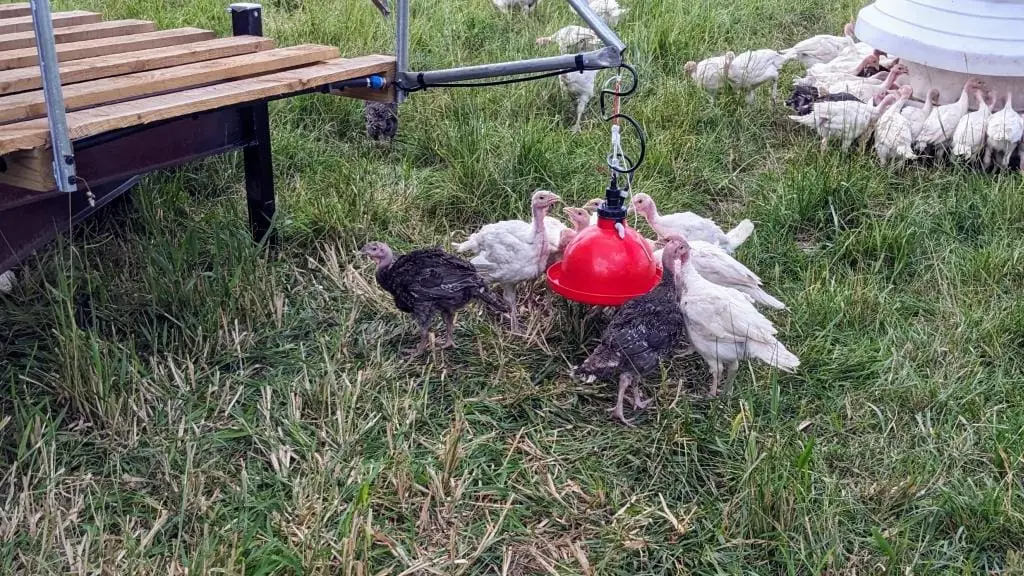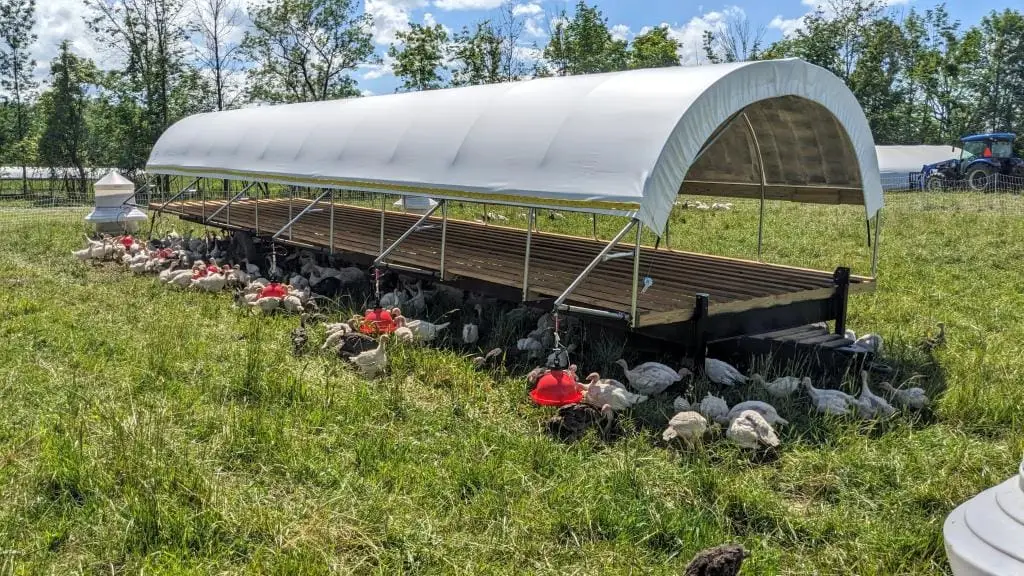This spring I built a new turkey shelter starting from a forty foot long mobile home frame. I purchased the frame from a Craigslist seller over a year back in anticipation of this project, but I wasn’t able to get everything together until a few weeks ago. As the turkey flock has grown, I knew the older trailer wouldn’t be enough on its own, so it was high time to roll out another one.

The trailer frame I originally brought home was in a sorry condition. The rails were racked all along their length. I spent most of an afternoon straightening the worst kinks. At one point I had the tractor hooked up to the hitch, the delivery van’s rear bumper pressed up against a bulge, and a come-along chained up on the opposite corner pulling against the pickup truck, pushing and pulling in different directions to work out the wobbles while I made my way up and down the frame, smacking away at it with my heaviest sledge hammer. I never achieved perfection, but I settled for “good enough for turkeys.”

We like to give our turkeys plenty of space to roam out on the pastures, so they primarily use the shelter for a place to roost at night. Turkeys have a strong instinct to roost up above the ground. We’ve learned to design shelters with a slatted rough sawn wood floor. The slatted design provides comfortable roosting while also allowing for manure to fall through to keep the sleeping area neat while distributing the manure across the pasture.

Besides the nocturnal use as a roosting spot, turkeys prefer to have a shady place to rest during the heat of the day, so we build our shelters with steel hoops covered by tarps. We’ve found that chain link fence rails work well when bent into hoops. The tarps are all custom made for us with pockets formed on the ends. I run a flexible piece of poly pipe through the pocket, and then chase a length of high tensile fence wire through the pipe sleeving. Using a fence tensioner, I cinch down the ends of the tarp until I can’t turn the ratchet any more. After a few days sitting in the sun, I go back for a couple extra cranks on the tensioner. A well-tensioned tarp tends to stay put even in heavy winds, and I think that it adds some strength and integrity to the rest of the structure.

One change from previous designs was that I integrated waterers on the trailer. I included outrigger booms along the right side to hold bell waterers. These are actually sold as chicken waterers, but ironically I’ve never liked them much for chickens; I think they work out better for turkeys. We’ve learned that turkeys are too rough on the nipple lines we like for chickens. And they have a messy habit of standing in water trays, so we can’t use shallow drinking troughs. But these bell waterers provide just the right balance so the turkeys get to drink all they want without being able to foul things up.

With the pasture shelter trailer in place, the turkeys seem like they are adapting well to life out on the range. They are working their way across the pasture we call “Center Field.” The cattle grazed it two weeks ago and the turkeys will make a zig-zagging pass through the same field following a different route. Now that they are set up, we’re off to get going on the next project: making some urgent repairs to the human shelter.

4 thoughts on “We Build a New Turkey Shelter”
This is excellent. We have a couple old half rotten trailers at our place, i will be converting one this summer. Thanks for posting. How large of an area do you enclose with the poultry netting to contain the turkeys? And how many turkeys do you keep in that area?
Hi Matt, we have 100 ft, 82 ft, and 164 ft sections of net fencing, so we typically arrange things to build pens that are 100 x 82. We rotate them on a 3 day cycle for up to 400 turkeys. Even at 3 days, they manage to tear up the area right around the feeders and waterers pretty quickly, so a quicker rotation might be in order. – Dave
I love the ingenuity and thrift of small farmers like yourself. You show us what “sustainable” means. ?
Thanks Jeanne!